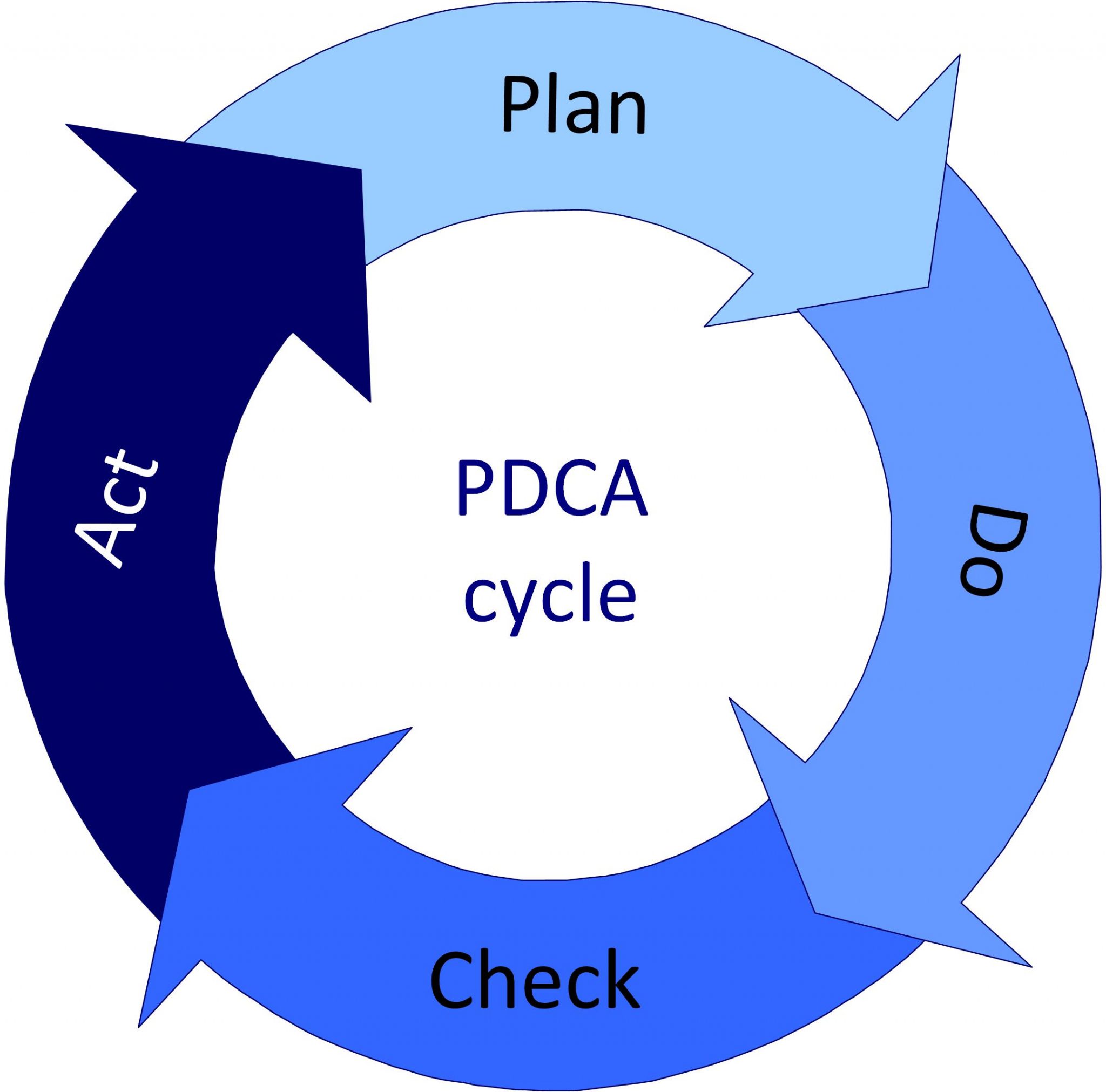PDCA is a process improvement management cycle based on the scientific method of proposing a change to a process, implementing the change, measuring and reviewing the results and taking any appropriate action resulting from the change. The cycle is often called the Deming Cycle after J Edwards Deming, who developed the cycle based on earlier work by Walter A Shewart.
The four stages of the cycle are Plan – Do – Check – Act/Adjust. Toyota renders this as Analyse – Implement – Reflect – Adjust.
Plan
This stage is the development of your action plan. You should already have spent time ensuring that you properly understand the problem and its scope. Describe the problems with the current condition, the goals for the process and the changes needed to achieve the goals.
Use planning tools appropriate to the scale of your problem. Many process improvement cycles will only require simple planning tools: it is important not to over-complicate the problem. Using the A3 Report as a framework for the PDCA cycle is a good way to ensure simplicity and completeness.
Can the improvement be achieved in a short timescale? Could it be broken into a series of smaller improvements to deliver benefit earlier?
- Determine customer needs – customer may be internal or external
- Identify the concern or problem – define the scope
- Collect data and study – you will need good data to be able to demonstrate that an improvement has been achieved.
- Seek root causes
- Set objectives
- Set out the working plan
- Identify who will be responsible for leading the change
- Gain consensus
- Train as necessary
Do
Implement the improvement. Think of it as an experiment - you can modify it or undo it if it doesn't work.
Check
Verify the results. Chart process data in the same way that you did in specifying the problem, demonstrating that the expected improvement has been achieved.
- Were the objectives met?
- Review root causes – have the implemented countermeasures addressed them?
- Confirm continued improvement
- What was learnt?
- What could be done better next time?
- Are further improvements possible?
Act/Adjust
- Identify further improvements
- Any loose ends to tidy up?
- Write and adopt new standards – how will the improvement be sustained? Who will be responsible for that?
- Communicate the requirements
- Recurrence prevention
- Celebrate & congratulate
- Look to the next problem
Was this a long-term countermeasure to address the identified problem or a short-term ‘fix’? If the latter, work needs to start on the next PDCA cycle right away. Can a long-term countermeasure be implemented in one PDCA cycle or will it require several, each improving the situation?

Various lean tools are used withing the PDCA cycle. Take a look at Process Mapping, Root Cause Analysis and A3 Problem Solving.